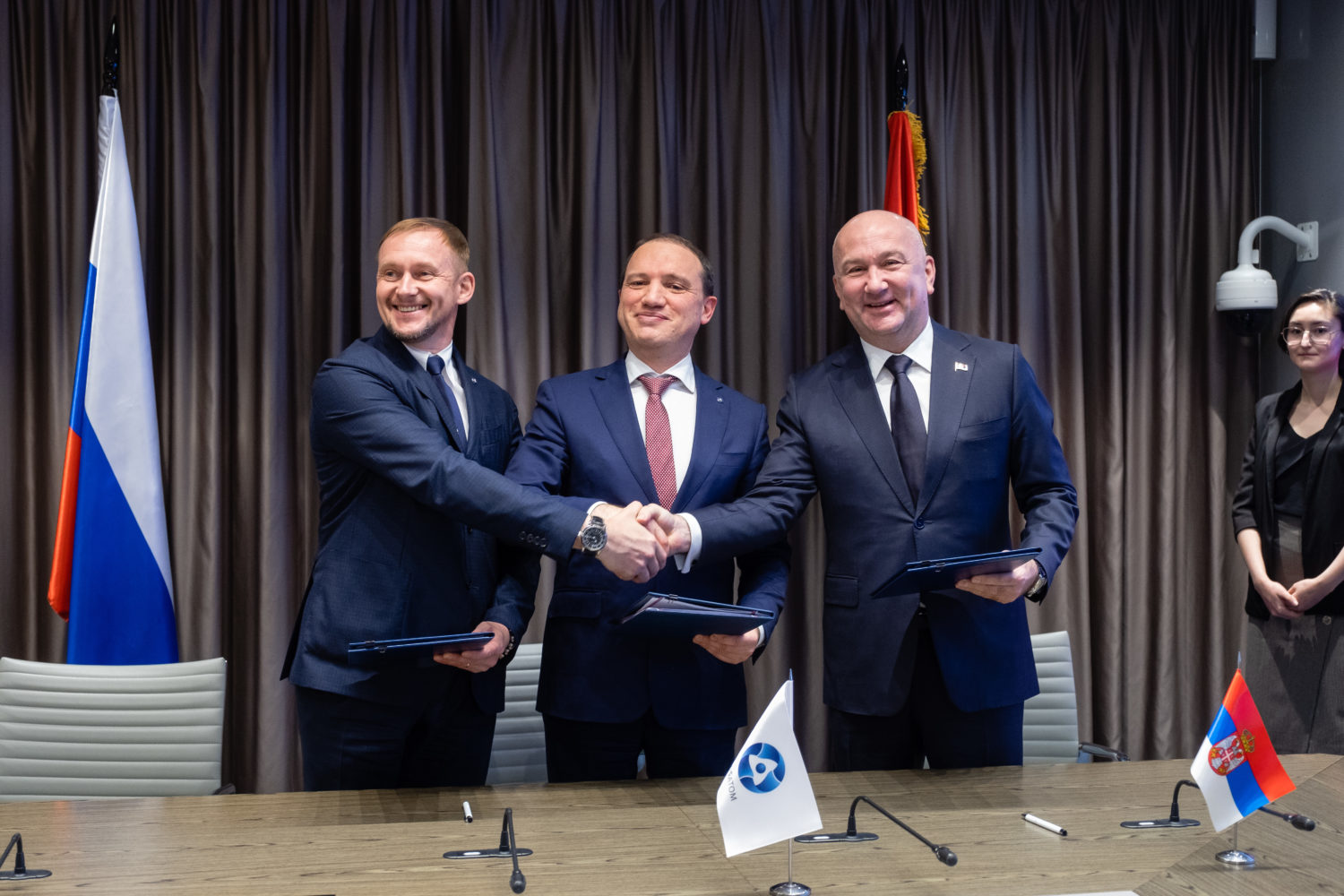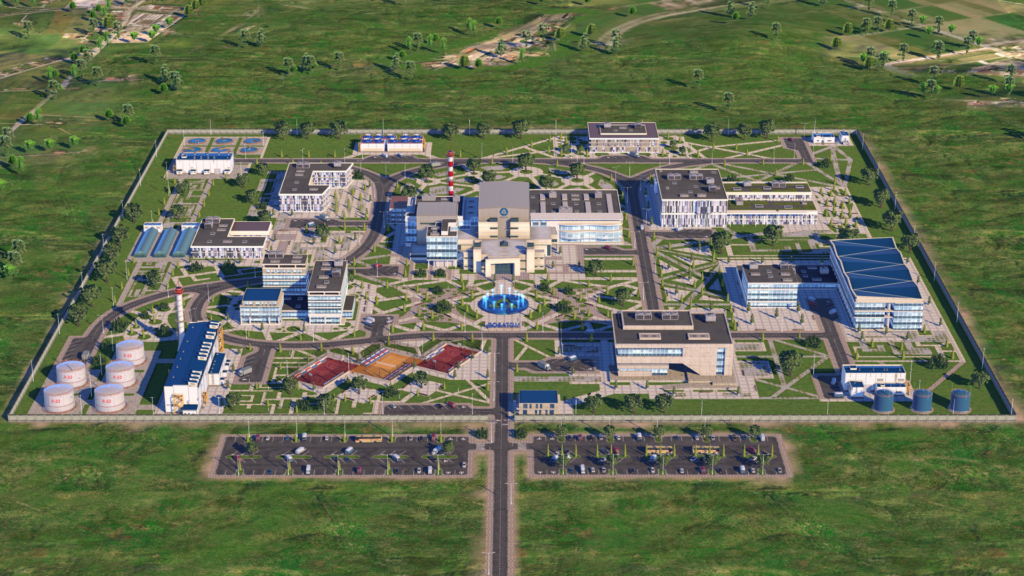
Rosatom NSTC to Come to Europe
back to contentsRussia and Serbia agreed to build a nuclear science and technology center (NSTC). In December 2021, Rosatom and the Government of Serbia signed a framework agreement establishing a joint venture that will work on the NSTC project.
Sequence of actions
The Serbian NSTC project will be implemented in three successive stages. First, a radiopharmaceutical facility will be built in Serbia to produce radioactive substances for cancer treatment. The country has a number of functioning nuclear medicine centers, but most of the radioactive pharmaceuticals they use are imported. When the new facility is put in operation, radio pharmaceuticals will be produced domestically. At this stage, feedstock isotopes will be supplied by Russia.
The second step provides for the construction of a cyclotron. After it is launched, it will be used to fabricate feedstock isotopes for the production of radioactive pharmaceuticals. With an operating cyclotron in place, Serbia will produce enough isotopes to meet domestic demand and export them to neighboring countries.
At the third stage, Serbia will construct a research reactor and laboratories. The reactor will be used to fabricate isotopes, stage different experiments and conduct material studies. Medical isotopes obtained in the cyclotron or the reactor have different half-life periods.
Rosatom’s role in the project will not be restricted to that of a technology vendor. “We plan to co-invest in the project to have a share in the production capacity and participate in research programs,” President of Rusatom Overseas Evgeny Pakermanov said.
NSTC capabilities
The nuclear science and technology center in Serbia is Rosatom’s second NSTC project globally and the first one in Europe. The NSTC is currently built in El Alto (Bolivia) at 4,000 meters above the sea level. It will comprise a research reactor, a pre-clinical cyclotron facility, a radiobiology and radioecology laboratory, and a multi-purpose irradiation center. The irradiation center is designed to improve quality and extend shelf life of agricultural produce and foodstuffs. It employs an ionizing radiation technique approved by the UN Food and Agriculture Organization (FAO), IAEA, and World Health Organization.
The Serbian project does not provide for an irradiation center and focuses on the use of nuclear technology in electronics and mining. In particular, it will produce neutron transmutation doped silicon for radio electronic applications. Neutron transmutation doping (NTD) is a method that transmutes atoms of a chemical material instead of adding dopants to it. Irradiation with thermal neutrons causes nuclear reactions in silicon, resulting in the formation of phosphorus. The advantage of the NTD method is an extremely uniform doping profile. When phosphorus is added to molten silicon (a conventional doping method), it is almost impossible to achieve the same level of uniformity. Neutron transmutation doped silicon meets all the requirements for power electronics and power industry applications. According to estimates, demand for silicon will double after 2025 when production of internal combustion engines is expected to shrink. Geologists also need isotopes to better understand the genesis and age of mineral deposits. They study isotopes of biophile elements, i. e., those involved in biochemical processes (Н, С, О, and S). For example, distribution of stable oxygen isotopes helps make conclusions about origins of the substance involved in the ore formation process. Sulfur of biogenic and volcanogenic origin has a different isotope composition. Accumulation of certain isotopes in minerals is used by the isotopic geochronology method to determine the age of geological objects with a high level of accuracy.
Geologists also need isotopes to better understand the genesis and age of mineral deposits. They study isotopes of biophile elements, i. e., those involved in biochemical processes (Н, С, О, and S). For example, distribution of stable oxygen isotopes helps make conclusions about origins of the substance involved in the ore formation process. Sulfur of biogenic and volcanogenic origin has a different isotope composition. Accumulation of certain isotopes in minerals is used by the isotopic geochronology method to determine the age of geological objects with a high level of accuracy.
What makes the Bolivian and Serbian projects similar is the use of nuclear medicine technology. “The radiopharmaceutical facility and nuclear medicine center will give local residents access to hi-tech medical assistance that primarily addresses oncologies,” said Alexey Likhachev, Director General of Rosatom. International significance
International significance
When in operation, the NSTC will become a point of attraction for researchers, engineers, doctors and politicians in the Balkans. “We signed agreements bringing Serbia back to the ranks of the European countries that have a platform for nuclear technology research. Soon after that, we started receiving requests from neighboring countries willing to participate in our research programs,” says Nenad Popović, Minister of Innovation and Technological Development of Serbia and Chairman of the Intergovernmental Committee for Cooperation between Serbia and Russia.
Construction of the NSTC is a practical implementation of the Russian-Serbian cooperation agreement signed in 2019 during the visit of Russian President Vladimir Putin to Serbia. Nenad Popović believes that the NSTC agreement signed in December would open up new prospects for nuclear technology partnerships between Serbia and Russia. He is echoed by Evgeny Pakermanov who said, “The NSTC will stimulate development of a new economic sector based on non-power nuclear applications.”
Evgeny Pakermanov is confident, “It is hard to find a facility that fits more into the sustainable development goals than the NSTC. It will employ carbon-free technologies aiming to develop medicine, science and industry. This project needs highly qualified professional staff. The first students from the Republic of Serbia already study at Russian universities, and their number is planned to grow. We hope that many of the graduates will take part in the construction and operation of the nuclear science and technology center.”




